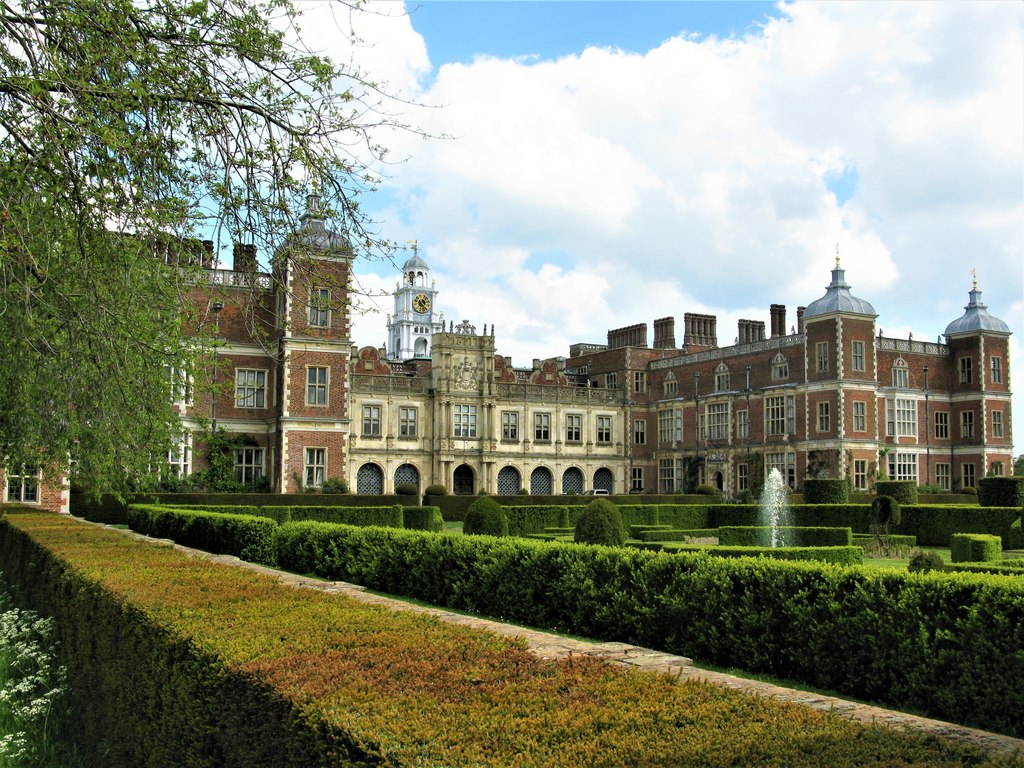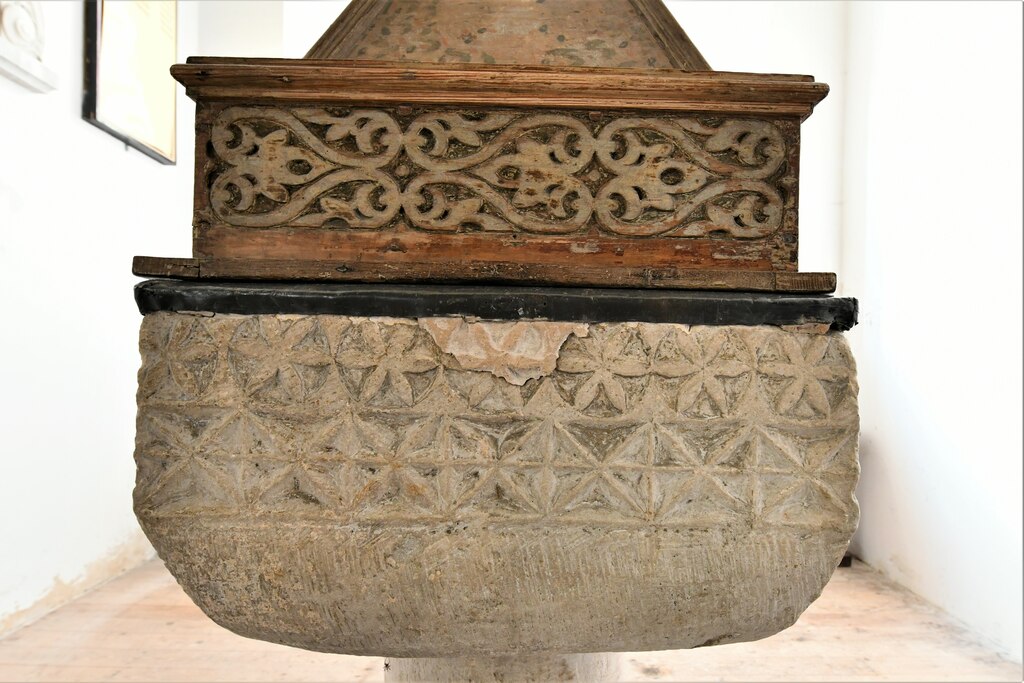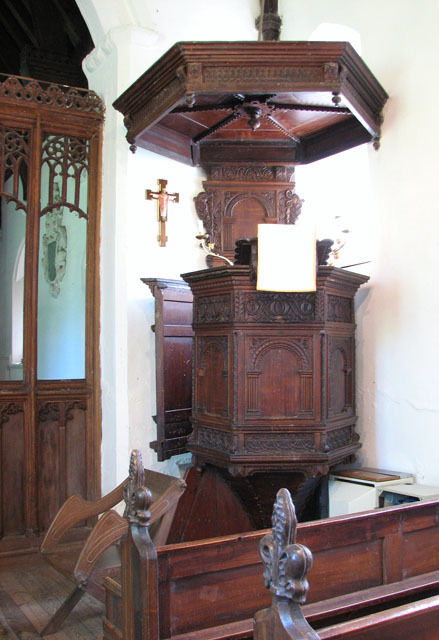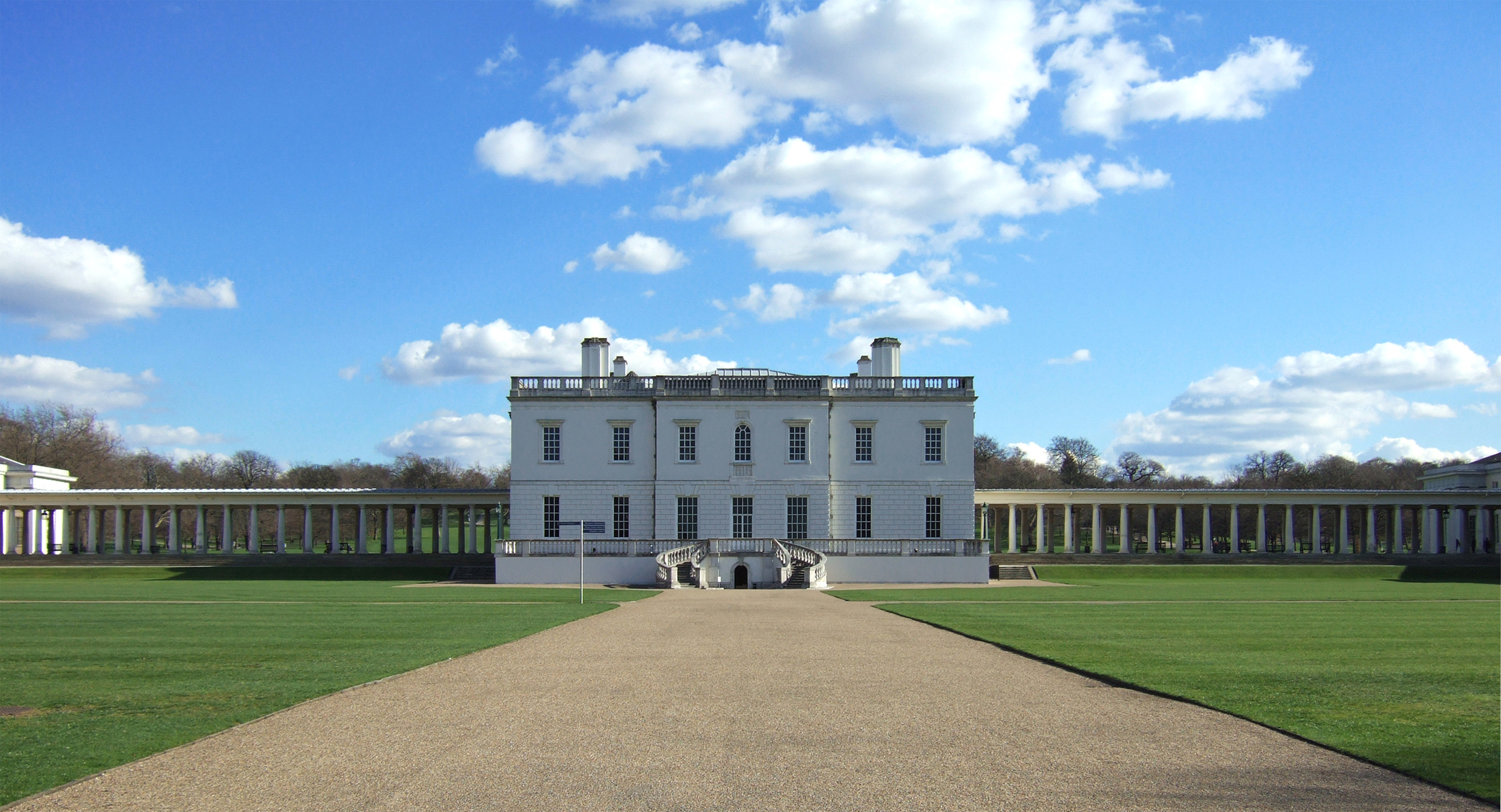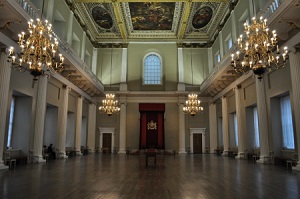Jacobean architecture
|
Hatfield House is a red brick country house considered a prime example of Jacobean architecture. Built in 1611 by Robert Cecil, 1st Earl of Salisbury, it is a Grade I listed building located north of London. |
Contents |
[edit] Introduction
Jacobean architecture is a style associated with King James VI of Scotland who later ruled as James I over the unified kingdoms of England and Ireland (as well as Scotland) from 1603 to 1625. Jacobean architecture is an early form of the Stuart architectural style which continued to evolve throughout the reign of the British House of Stuart. Some historians refer to the Stuart era as the golden age of British architecture. This period ended in 1714 with the death of the last Stuart ruler, Queen Anne.
[edit] The transition from Elizabethan to Jacobean
Influences of the preceding Elizabethan architectural style (named after Queen Elizabeth I) dominated early Jacobean architecture. Common features in both styles included classical, symmetric Italian and French style ornamentation (introduced during the English Renaissance) as well as gabled facades and decorative motifs such as strapwork carvings - looking almost like cut leather - from the Netherlands.
|
This c12th font at Codford St Peter has a c17th cover with strapwork carving. |
Another shared characteristic was large windows with mullions and transoms (which in some cases grew so large as to dominate entire walls).
The Jacobean style gradually began to set itself apart from the Elizabethan style. This was initially apparent in the construction of large houses. These stately buildings were often designed in the shape of an E or H and excluded internal courtyards. Some houses included increasingly extravagant decorations of wood and plaster.
|
The church of St James in Runcton Holme has a Jacobean pulpit and sounding board. |
This style of rich decoration gradually made its way into church furnishings, where wooden Jacobean pulpits began to replace the stone pulpits that were common in earlier periods. Renaissance decorative motifs as well as strapwork were sometimes incorporated into these pulpits, which may have been topped by a tester (or sounding board) adorned with small pendants.
[edit] Inigo Jones and the English classical tradition
The most noteworthy architect of the Jacobean period was Inigo Jones, who was appointed surveyor of works to the heir to the throne, Henry, prince of Wales in 1610. After the prince’s death in 1612, Jones succeeded Simon Basil as the king’s surveyor of works in 1615.
Influenced by the designs of the Venetian architect Andrea Palladio, Jones introduced the style of Palladian architecture to England after a trip he made to Italy in 1613 - 1614. It was during this trip that he picked up inspiration from the Renaissance architecture expressed in the works of Palladio.
Palladian designs were based on the symmetry and perspective of classical architecture, particularly the temples of the Ancient Greeks and Romans. It was characterised by proportions of mathematics and classical facades rather than ornament.
Some of the defining features of Palladianism included:
- Corinthian columns.
- Decorative motifs such as masked faces and scallop shells.
- Pediments over doors and windows, both external and internal.
- Terms – free-standing stones representing the head and upper torso of the Roman god Terminus, on top of a pillar.
See also: Palladian architecture.
Surviving examples of Jones’ neoclassical projects include:
- The Queen’s Chapel at St James Palace in Greenwich. This project began in 1616 and halted in 1619 following the death of Queen Anne. It was eventually completed in 1635 for Queen Henrietta Maria.
- The Banqueting House on Whitehall (started in 1619 and completed in 1622). This Palladian-style building is considered to be his greatest work.
|
The two surviving masterpieces of Inigo Jones. The Queen's Chapel in Greenwich (1619 - 1635). |
The Banqueting House on Whitehall (1619 - 1622). |
Jones remained in his royal role when Charles I came to power in 1625. During this period (which actually marked the start of the Carolean period), his style continued to dominate architecture, until the Civil War (1643), when he was forced to give up his royal position and punished for his association with the Stuart kings. He was later pardoned and returned to the profession as an influential person. Elements of his style - along with other Jacobean characteristics - continued to appear in architecture into the middle of the 1600s.
[edit] Related articles on Designing Buildings
Featured articles and news
Government consultations for the summer of 2025
A year of Labour, past and present consultations on the environment, the built environment, training and tax.
CMA competitiveness probe of major housing developers
100 million affordable housing contributions committed with further consultation published.
Homes England supports Greencore Homes
42 new build affordable sustainable homes in Oxfordshire.
Zero carbon social housing: unlocking brownfield potential
Seven ZEDpod strategies for brownfield housing success.
CIOB report; a blueprint for SDGs and the built environment
Pairing the Sustainable Development Goals with projects.
Types, tests, standards and fires relating to external cladding
Brief descriptions with an extensive list of fires for review.
Latest Build UK Building Safety Regime explainer published
Key elements in one short, now updated document.
UKGBC launch the UK Climate Resilience Roadmap
First guidance of its kind on direct climate impacts for the built environment and how it can adapt.
CLC Health, Safety and Wellbeing Strategy 2025
Launched by the Minister for Industry to look at fatalities on site, improving mental health and other issues.
One of the most impressive Victorian architects. Book review.
Common Assessment Standard now with building safety
New CAS update now includes mandatory building safety questions.
RTPI leader to become new CIOB Chief Executive Officer
Dr Victoria Hills MRTPI, FICE to take over after Caroline Gumble’s departure.
Social and affordable housing, a long term plan for delivery
The “Delivering a Decade of Renewal for Social and Affordable Housing” strategy sets out future path.
A change to adoptive architecture
Effects of global weather warming on architectural detailing, material choice and human interaction.
The proposed publicly owned and backed subsidiary of Homes England, to facilitate new homes.
How big is the problem and what can we do to mitigate the effects?
Overheating guidance and tools for building designers
A number of cool guides to help with the heat.
The UK's Modern Industrial Strategy: A 10 year plan
Previous consultation criticism, current key elements and general support with some persisting reservations.
Building Safety Regulator reforms
New roles, new staff and a new fast track service pave the way for a single construction regulator.







